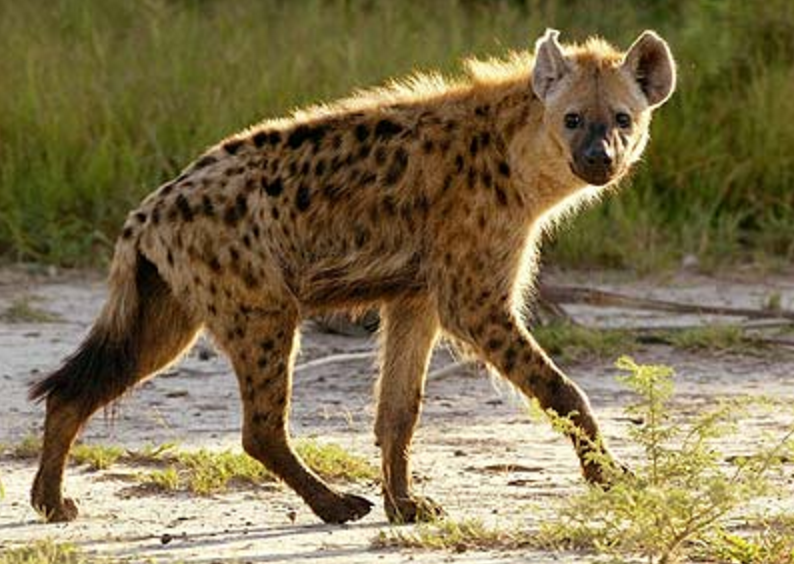Social Dominance in Spotted Hyenas
Biology 342 Fall 2015
Elaine Kushkowski & Duncan Herb
Introducing the Spotted Hyena

The Spotted Hyena (Crocuta crocuta) differs from its relatives, as well as other carnivorous megafauna in behavior as well as in numerous physiological aspects. In popular culture, hyenas are known for their distinctive “laugh” and an association with often sinister characters, as well as relatively minimal intelligence (as portrayed in the Lion King). In reality, this species is actually one of the more sophisticated and socially complex organisms in the African savannah. The spotted hyena is the only member of its genus Crocuta, while the “true” hyenas are members of the genus Hyaena. Relatives of the spotted hyena include the striped and brown hyenas, while their miniscule cousin the aardwolf, the only insectivorous member of the family Hyaenidae, resides in the genus Proteles.
Animals in the class Mammalia are often social, meaning they exist within groups of their own species. These groups are often male-dominated, with the largest male commanding the distribution of resources, including food and mates. However, of the various species of carnivore in southern Africa, none is as physiologically or genetically predisposed towards a matriarchal society as the spotted hyena. Composed entirely of matrilineal “clans”, groups of this species function with the lowest-ranking female above the highest-ranking male, while female offspring directly inherit their mother’s social ranking.
On this website, you will find a font of information regarding what mechanisms are believed to have led to this social hierarchy and how they work, as well as how it may have developed over the aeons and what purpose they serve in increasing the reproductive value of the individual, connected and summarized in the context of Niko Tinbergen’s 4 ethological questions.
Tinbergen’s Four Questions
In 1963, Nicolaas Tinbergen suggested four interconnected areas of inquiry within ethology (Tinbergen, 1963). These questions helped develop sub-disciplines as the study of Animal Behavior grew into a field. More recently, researchers have begun using Tinbergen’s questions to emphasize the importance of an integrated approach to the study of animal behavior. This website applies Tinbergen's questions of Mechanism, Adaptive Value, Ontogeny, and Phylogeny in order to present a more complete picture of social hierarchies in the spotted hyena.
Mechanism
The biological processes underlying the production of a behavior
In relation to mechanism, we discuss how brain development and structure of the spotted hyena might influence its capacity to participate in larger and more complex social groups. Additionally, we describe the distinct olfactory behaviors by which individual hyenas recognize members of their own clan and maintain social bonds, and detail its various uses.
Adaptive Value
The current value of the behavior to survival and reproductive success
We discuss the value of differences in body size and fission-fusion dynamics of Crocuta crocuta. We describe the role each of these plays in the lifetime of an individual, and its significance to the individual’s ability to survive, reproduce, and protect its young.
Ontogeny
How the behavior develops over the lifetime of an individual
We discuss the processes by which an individual earns its rank, which differs based on the hyena’s sex. Males and females earning rank within the clan through vastly different means. Additionally, we discuss how development of the skull over the hyena’s lifetime affects the social structure.
Phylogeny
How the behavior fits into the evolutionary history of the species
We discuss how the predilection for female spotted hyena to grow significantly larger than the males, as well as the dental adaptations made by Crocuta crocuta, contributes to the way hyena clans developed a matriarchal social hierarchy.